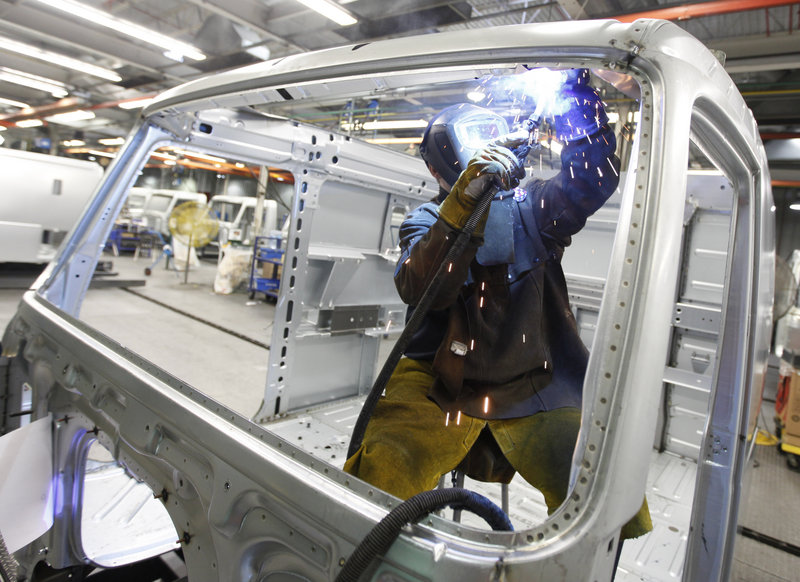WASHINGTON — The best month for U.S. factories in nearly seven years is brightening the outlook for job growth.
Companies are exporting more construction and mining equipment, and Americans are buying more cars, appliances and computers.
The Institute for Supply Management, a private trade group, said Tuesday that its index of manufacturing activity rose last month to 60.8. It was the highest reading since May 2004 and the 18th straight month the sector has grown. Any reading above 50 indicates expansion.
The strong data on manufacturing activity was a major reason the Dow Jones industrial average close above 12,000 for the first time since June 2008. The Dow rose 148.23, or 1.3 percent, to 12,040.16. It last closed above 12,000 in June 2008, although it traded above that level several times last week before settling lower.
The S&P 500 gained 21.47, or 1.7 percent, to close at 1,307.59. It last closed above 1,300 in August 2008.
The Nasdaq composite index rose 51.11, or 1.9 percent, to 2,751.19.
Five stocks rose for every one that fell on the New York Stock Exchange, where consolidated volume came to 4.89 billion, up from Monday’s 4.38 billion.
Investors overlooked a separate report that showed builders spent less on projects in December and that the construction industry had hit a decade low.
Construction typically helps drive economic recoveries after a recession. But this time around, factories are more likely to crank out jobs.
Manufacturers added 136,000 jobs in 2010, the first annual net gain since 1997. And the trade group’s employment index last month rose to its highest level since 1973.
Still, the sector lost almost 2.2 million jobs in 2008 and 2009. And manufacturers have managed to boost output in recent years by making their operations more efficient and getting more work out of the employees they already have.
Brian Bethune, an economist at IHS Global Insight, said he expects manufacturers will likely add about 10,000 to 15,000 jobs a month for the first few months this year. The January jobs report will be released Friday.
One reason that hiring expectations are rising is that new orders, export orders and order backlogs all rose in January. That suggests U.S. factories will continue to increase output in the coming months.
“These companies have been running lean and mean, and now they’ve got an orders backlog,” Bethune said. That’s likely to push them add some workers, he said.
Manufacturing employs twice as many people as construction, which has struggled since the housing market went bust in 2006.
Construction spending fell to $814 billion last year, the Commerce Department reported. That’s the lowest level in a decade and nearly half of what some economists consider to be a healthy amount. Economists say it could take until the middle of the decade to reach that point again.
Foreclosures are piling up, and home prices in nearly every major U.S. city are still falling.
Spending on public projects is declining, mostly because state and local governments are grappling with budget crises and federal stimulus dollars are fading. Between November and December, federal construction dollars plunged 11.6 percent.
Rising vacancy rates and declining rents are dragging on the commercial real estate market.
“If manufacturing is the best performing sector, construction remains the worst,” said Paul Ashworth, an economist at Capital Economics.
Manufacturing companies are likely benefiting from a cut in Social Security taxes that may boost consumer spending, and a tax break for firms that buy new machinery and other big-ticket items, analysts said. Both tax breaks took effect last month.
Copy the Story Link
Send questions/comments to the editors.



Success. Please wait for the page to reload. If the page does not reload within 5 seconds, please refresh the page.
Enter your email and password to access comments.
Hi, to comment on stories you must . This profile is in addition to your subscription and website login.
Already have a commenting profile? .
Invalid username/password.
Please check your email to confirm and complete your registration.
Only subscribers are eligible to post comments. Please subscribe or login first for digital access. Here’s why.
Use the form below to reset your password. When you've submitted your account email, we will send an email with a reset code.